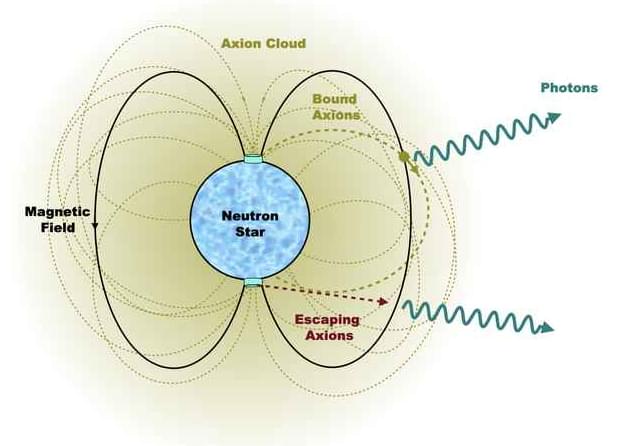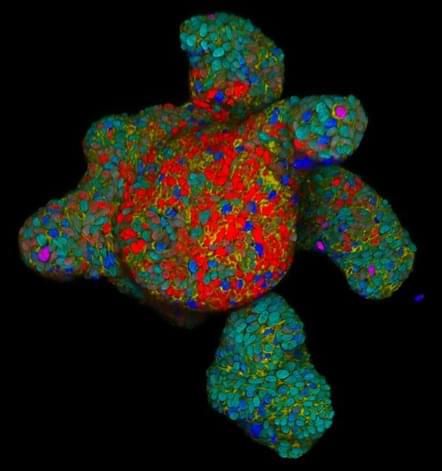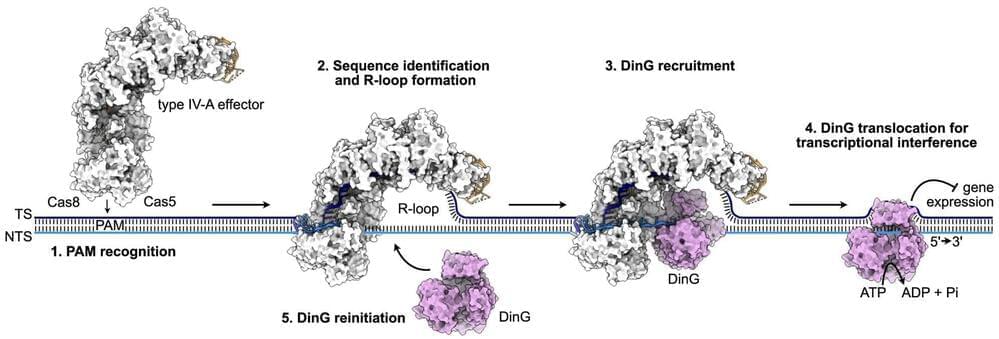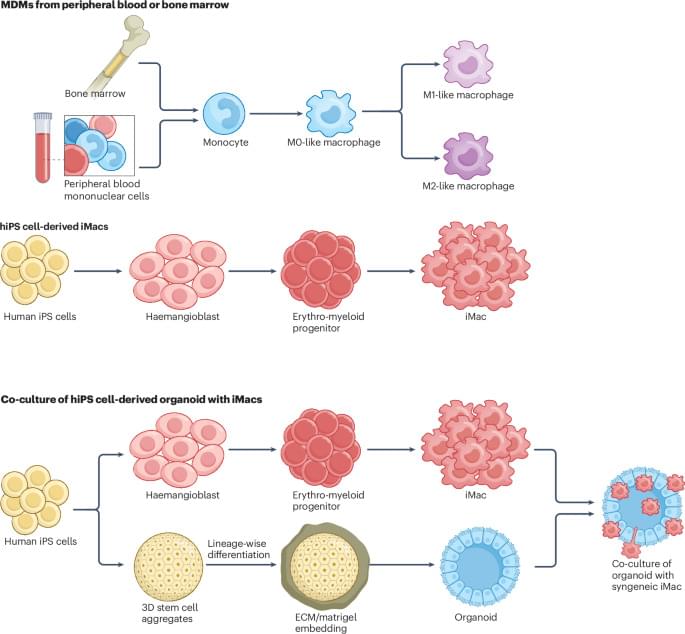Physicists show that neutron stars may be shrouded in clouds of ‘axions’ — and that these clouds can teach us a lot. A team of physicists from the universities of Amsterdam, Princeton and Oxford have shown that extremely light particles known as axions may occur in large clouds around neutron stars. These axions could form an explanation for the elusive dark matter that cosmologists search for — and moreover, they might not be too difficult to observe.
A multi-institutional group of researchers led by the Hubrecht Institute and Roche’s Institute of Human Biology has developed strategies to identify regulators of intestinal hormone secretion. In response to incoming food, these hormones are secreted by rare hormone producing cells in the gut and play key roles in managing digestion and appetite. The team has developed new tools to identify potential ‘nutrient sensors’ on these hormone producing cells and study their function. This could result in new strategies to interfere with the release of these hormones and provide avenues for the treatment of a variety of metabolic or gut motility disorders. The work will be presented in an article in Science, on October 18th.
The intestine acts as a vital barrier. It protects the body from harmful bacteria and highly dynamic pH levels, while allowing nutrients and vitamins to enter the bloodstream. The gut is also home to endocrine cells, which secrete many hormones that regulate bodily functions. These enteroendocrine cells (EECs, endocrine cells of the gut) are very rare cells that release hormones in response to various triggers, such as stretching of the stomach, energy levels and nutrients from food. These hormones in turn regulate key aspects of physiology in response to the incoming food, such as digestion and appetite. Thus, EECs are the body’s first responders to incoming food, and instruct and prepare the rest of the body for what is coming.
Medications that mimic gut hormones, most famously GLP-1, are very promising for the treatment of multiple metabolic diseases. Directly manipulating EECs to adjust hormone secretion could open up new therapeutic options. However, it has been challenging to understand how gut hormone release can be influenced effectively. Researchers have had trouble identifying the sensors on EECs, because EECs themselves represent less than 1% of cells in the intestinal epithelium, and in addition the sensors on these EECs are expressed in low amounts. Current studies mainly rely on mouse models, even though the signals to which mouse EECs respond are likely different compared to those to which human EECs respond. Therefore, new models and approaches were required to study these signals.
Researchers have engineered a material that is as soft as skin but remarkably strong.
Ulsan National Institute of Science & Technology (UNIST) team in South Korea has developed an innovative magnetic composite artificial muscle. This new material can adapt its stiffness, transitioning from soft to rigid, and vice versa.
Interestingly, artificial muscle showcases “an impressive ability to withstand loads comparable to those of automobiles.”
Surfers could be protected from future shark attacks following new discoveries about how to trick sharks’ visual systems made by Professor Nathan Hart, head of Macquarie University’s Neurobiology Lab, Dr. Laura Ryan and colleagues.
Scientists from Vilnius University’s (VU) Life Sciences Center (LSC) have discovered a unique way for cells to silence specific genes without cutting DNA. This research, led by Prof. Patrick Pausch and published in the journal Nature Communications, reveals a new way to silence genes that is akin to pressing a “pause” button on certain genetic instructions within cells.
In Nijmegen, Netherlands, researchers have installed the world’s first microscope capable of live imaging of biological processes in such detail that moving protein complexes are visible. This new microscopic technique was developed by researchers led by Nico Sommerdijk from Radboud university medical center. As a demonstration of this innovative technique, Sommerdijk is now showcasing how arterial calcification begins.
Macrophages are associated with many human diseases but are challenging to study in vivo. Here, Ginhoux and colleagues discuss how iMacs — macrophages generated from induced pluripotent stem (iPS) cells — can enable disease modelling, including through the use of patient-derived iPS cells and 3D organoid co-culture systems. Ultimately, these iMac-based approaches can improve our understanding of macrophage biology in both health and disease.
Ymir ransomware exploits memory management to evade detection, targeting credentials for stealthy network breaches.
Researchers created a single-step device using redox electrodialysis and electrosorption to capture and destroy diverse PFAS chemicals, aiming to address contamination in water and industrial wastewater.
A study from the University of Illinois Urbana-Champaign is the first to introduce an electrochemical method capable of capturing, concentrating, and destroying diverse PFAS chemicals—including the increasingly common ultra-short-chain PFAS—in water, all in a single process. This breakthrough holds promise for tackling the mounting industrial challenge of PFAS contamination, especially within semiconductor manufacturing.
A previous U. of I. study showed that short-and long-chain PFAS can be removed from water using electrochemically driven adsorption, referred to as electrosorption, but this method is ineffective for ultra-short-chain molecules because of their small size and different chemical properties. The new study, led by Illinois chemical and biomolecular engineering professor Xiao Su, combines a desalination filtration technology, called redox electrodialysis, with electrosorption in a single device to address the problems associated with capturing the complete PFAS size spectrum.
Scientists continue to monitor Mount Spurr, a volcano to the west of Anchorage and a huge chunk of the state’s population, after signs of unrest this spring, and again in the fall.
The Alaska Volcano Observatory raised its color code for Spurr to yellow, or “advisory” status, Oct. 16.
The observatory’s Scientist in Charge, Matt Haney, says that was after seismometers picked up an increased number of small earthquakes at the volcano and GPS sensors showed it was swelling up.









